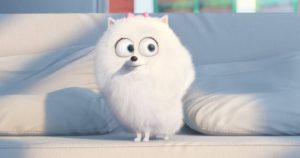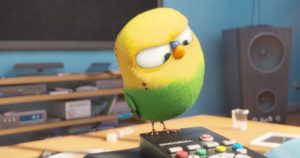 Pet lovers got a glimpse of what takes place when we leave our pets alone in the laugh-out-loud animated film, The Secret Life of Pets. Director Chris Renaud collaborated with composer Alexandre Desplat to bring the emotional lives of his furry stars to the screen.
Pet lovers got a glimpse of what takes place when we leave our pets alone in the laugh-out-loud animated film, The Secret Life of Pets. Director Chris Renaud collaborated with composer Alexandre Desplat to bring the emotional lives of his furry stars to the screen.
The collaboration began with Desplat reading the script and viewing early sequences of the film. Before they got into specific scoring notes, the director stated that they had “higher levels of conversation” as to what emotions and ideas they wanted the music to evoke. They also discussed what they wanted to avoid. In the course of the creating the score, Desplat recorded advanced sketches on the computer with full orchestration to start getting a sense of the music for the film, but most of the work occurred during the last two months of the almost two year production schedule when the movie was almost ready to be released.
“Certainly with this movie, we felt we had the opportunity to do something a bit different because of its cartoony nature, the idea of New York and jazz,” said Renaud. “We showed Alexandre very early versions of the movie to get the conversation started. One of the things we talked about was themes. It’s a very theoretical discussion. Sometimes you abandon those ideas, sometimes you don’t.”
Early on the team agreed upon the choice of jazz band, but that choice felt limiting to Desplat, especially in terms of the epic adventure, the mystery, the different worlds, so the composer added an orchestra on top of the band.
“At times the score is really full blast with a hundred and more musicians. There is a great electric energy coming from the musicians,” commented Desplat. “It was also clear that there was this comedic element that had to be emphasized with phrasing, and virtuosity, and enjoyment, which I think is what we like when we are watching cartoons. There is no limit. It is an open canvas where you can do anything. Splash red. Splash blue. Splash green. Musically you can do that.”
 Tonally there are moments in the film where the conventional choice would have been darker chase sequences. Renaud felt that Desplat went in a lighter direction, which was the right tone for the movie. Those choices reinforced the comedic elements and lightness of the film. The instrumentation also affected the tone of the music. The clarinet, played by virtuoso Dan Higgins, was important in the film.
Tonally there are moments in the film where the conventional choice would have been darker chase sequences. Renaud felt that Desplat went in a lighter direction, which was the right tone for the movie. Those choices reinforced the comedic elements and lightness of the film. The instrumentation also affected the tone of the music. The clarinet, played by virtuoso Dan Higgins, was important in the film.
“The first theme, the first notes you hear in the movie are played on the clarinet. This instrument comes back quite often playing the same melody. There is a lightness to it. It’s cheeky,” noted Desplat.
The areas of the film that were the most difficult for the composer were where the story transitions from the fun into moments of real danger, sadness and melancholy. In addition, the director wanted to end the film emotionally, reinforcing the wonderful feeling a pet owner gets coming home to be greeted by their animal with its unconditional love.
“That’s difficult when you are in a genre film where you have been bouncing with very jaunty music all the way,” Desplat explained. “How do you end a film without being too sad? This melancholy that you have to find that is not too melancholy. Without being sentimental, but still being moving.”
According to Renaud, “That turned out to be a very tricky cue to find. We were coming out of a lot of comedy. We were sort of hitting the breaks. We wanted to evoke something that was more genuine, more emotional. I was out of words when we were working together as to what should it be. How do you hit that balance? From my perspective, he did it beautifully.”





